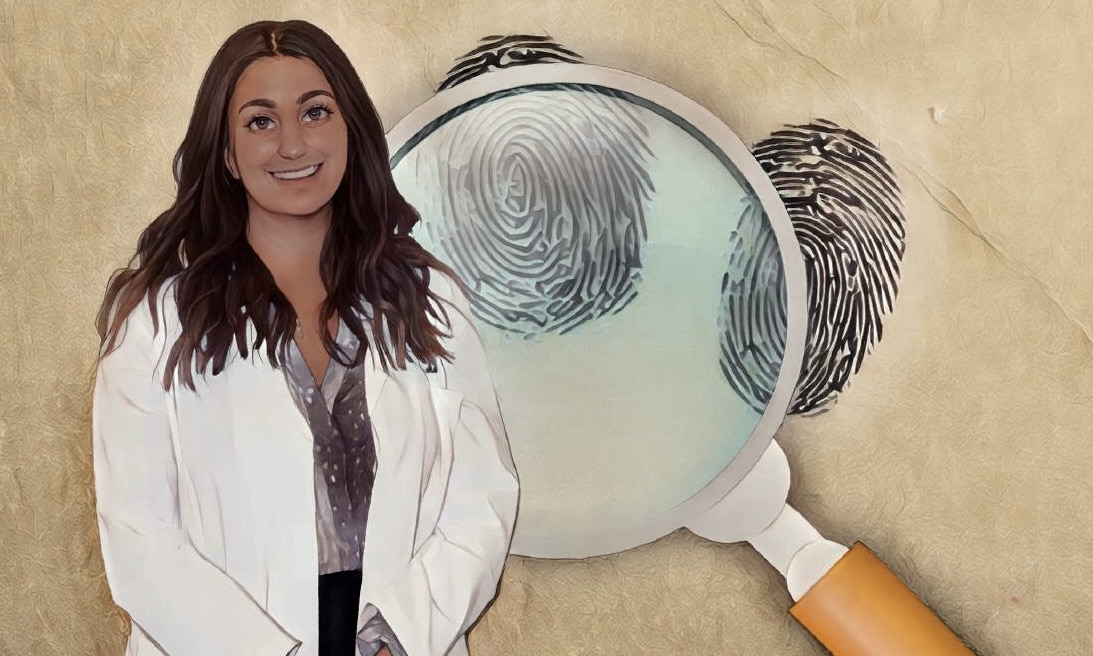Forensic genetic genealogy: The key to solving cold cases?
Professor Nicole Novroski discusses how this new technology can help resolve criminal cases.
In 11th grade biology, Nicole Novroski, assistant professor in the Department of Anthropology, wrote a paper on DNA fingerprinting—a process used in criminal investigations to identify a person’s genetic markup. That moment launched Professor Novroski’s deep interest in forensic biology and learning about the ways that science can solve crimes. Now, after years of working with the Minnesota Bureau for Criminal Apprehension and at the New York City office of the Chief Medical Examiner, Dr. Novroski has found a home at the University of Toronto Mississauga. Currently, she is focusing her research on forensic genetic genealogy—an investigative tool that uses consumer DNA data to explore family lineage, matching them to DNA evidence found at crime scenes—and DNA mixture deconvolution.
The last decade has revolutionized the way detectives solve crimes. With developments like forensic genetic genealogy, criminal cases gone cold can be solved through DNA analysis. In the forensic lab, a cold case is defined differently by different agencies, but oftentimes, it’s used when there has been no activity on the case for three or more years. This new technology allows for potential DNA samples, left untouched for years, to be reanalyzed with the possibility of being identified.
Every forensic case has unique variables. “What we have to remember is that forensic DNA typing in the traditional sense—so what you see in the courtroom or on TV, or what’s actually happening in real life now—is only a couple of decades old,” says Professor Novroski in an interview with The Medium. Forensic genetics is a field that only emerged in the late 1980s, and in the mid-90s, forensic DNA typing began evolving into the science that it is now.
“When it comes to some of these really old cases,” explains Professor Novroski, “you have to think that they were pre-DNA.” The investigators didn’t know that they were collecting useful DNA evidence.
“What we’re seeing is in a lot of those missing persons cases that are from the 70s, early 80s, DNA evidence was collected, that we are now testing with our new technologies,” says Professor Novroski. When a cold case is reopened, forensic genetic genealogy typically has never been used on the evidence. If the old evidence was put through traditional DNA typing, with no suspect or person of interest to compare that DNA profile to, it was, unfortunately, the end of the road. Now, it’s possible to find a match through private DNA testing companies.
There has been an increase in people submitting their DNA samples to public databases to help solve crime. “Private companies like 23andMe or Ancestry provide consumers the option to [upload] their DNA record unto a public database,” explains Professor Novroski. Law enforcement agencies can search these databases to make the same types of connections you would make when looking for relatives. These agencies can take potential DNA evidence from a missing person’s case or even unknown remains to look for relatives who have uploaded their personal samples.
These kits capture regions of the human genome that allow for the potential to determine relatedness between individuals’ DNA samples. “That’s when we start building out knowledge using additional genealogical data,” explains Professor Novroski. That can include anything from birth records and marriage certificates to anything publicly accessible on the internet. “Genealogists are really resourceful at finding a lot of this public information,” says Professor Novroski. Ultimately, the found genetic information helps create an initial family tree, which is then fortified with that public information to create a well-rounded picture of a person’s lineage.
DNA mixtures and the development of their interpretation further plays a role in the identification of DNA left at crime scenes. These are samples that have two or more contributors. “These mixtures are found everywhere, at homicide investigations, property crimes,” says Professor Novroski. “Just think about your cellphone, I guarantee you would find multiple DNA samples there.” Since DNA mixtures are so prevalent in forensic casework, it’s important to continue to improve our ability to make sense of DNA data.
Professor Novroski is passionate about finding basic science techniques that can better help deconvolute—separate—those mixtures. “At the end of the day,” says Professor Novroski, “the goal with improving our DNA mixture deconvolution efforts is to solve more crimes.” The greater the number of correlations between forensic evidence and persons of interest, the more cases can move into the criminal justice system. This can prove key to diminishing the number of cold case files that stay unresolved.
Forensic genetic genealogy may be able to help solve some of these crimes, but DNA mixtures are tricky. “If we don’t have enough DNA information, then there’s not much more we can do,” explains Professor Novroski, “regardless of how advanced some of these additional technologies become.”
While forensic genetic genealogy is a promising methodology, it’s not an end-all, be-all. “It’s important to remember that a lot of our current forensic methodologies are very effective for human identity,” explains Professor Novroski. “We can’t forget to take advantage of them.” For now, forensic genetic genealogy is an additional investigative tool that both law enforcement and forensic practitioners have access to in order to make sense of the evidence from an ongoing investigation.

